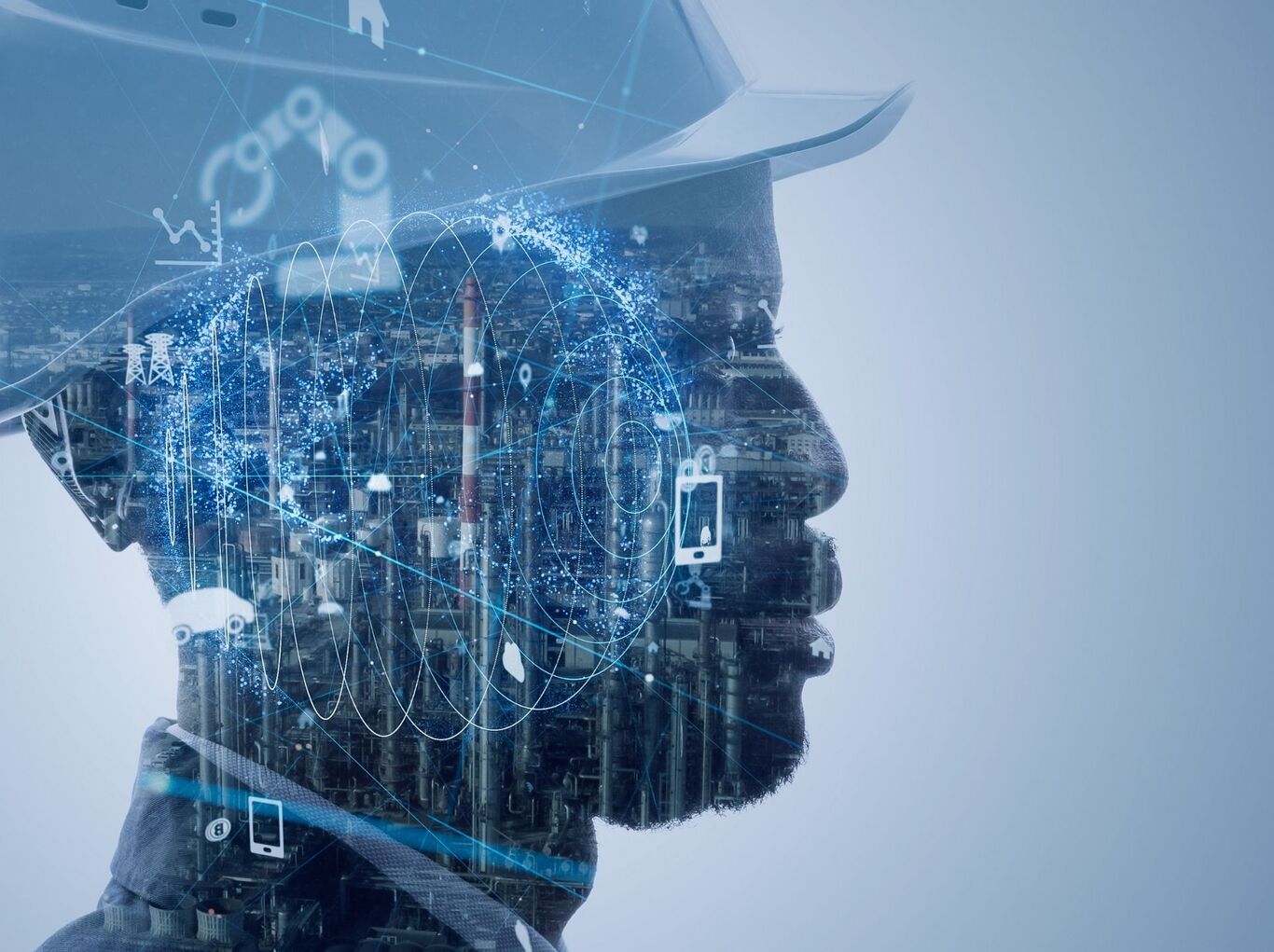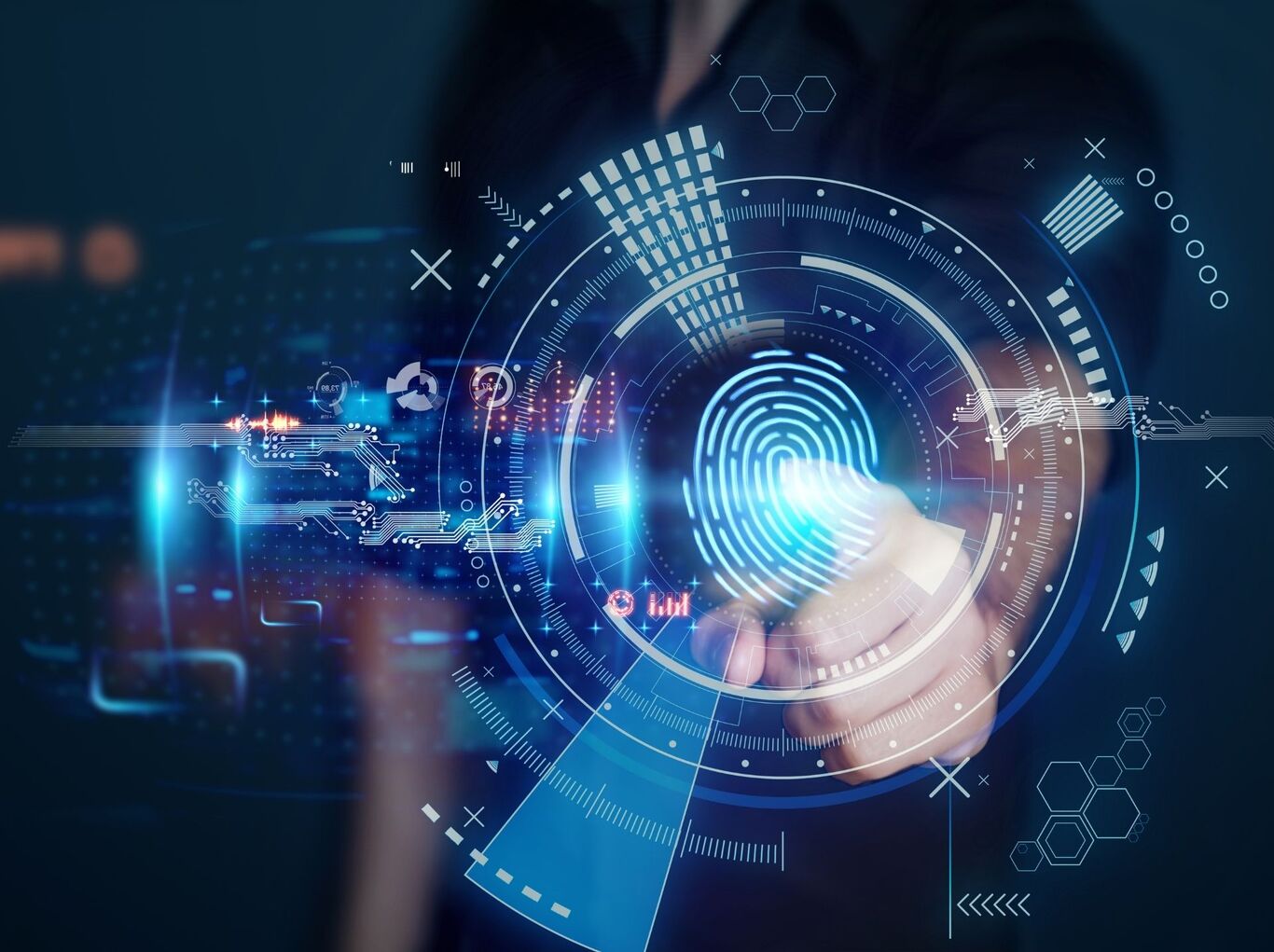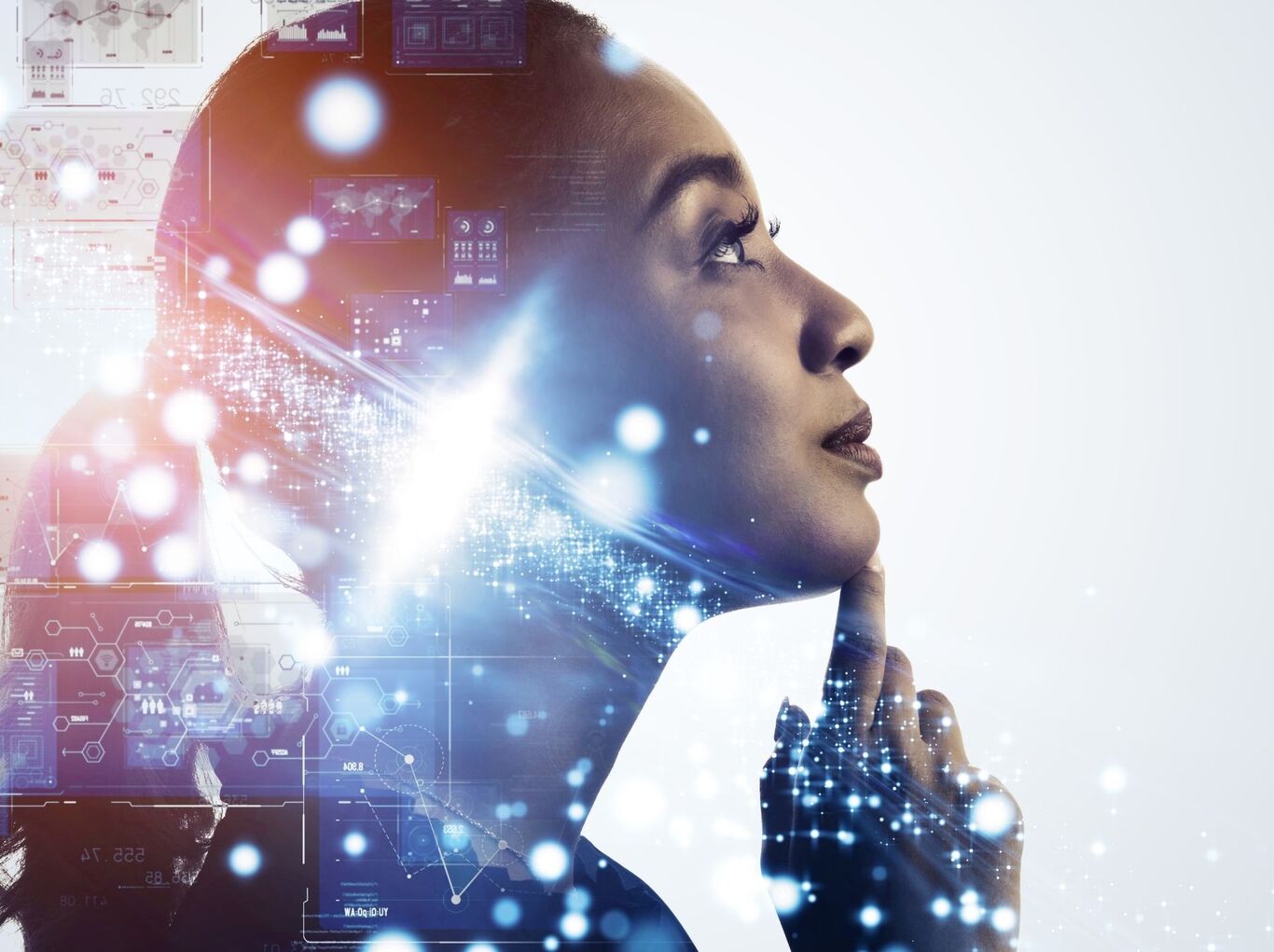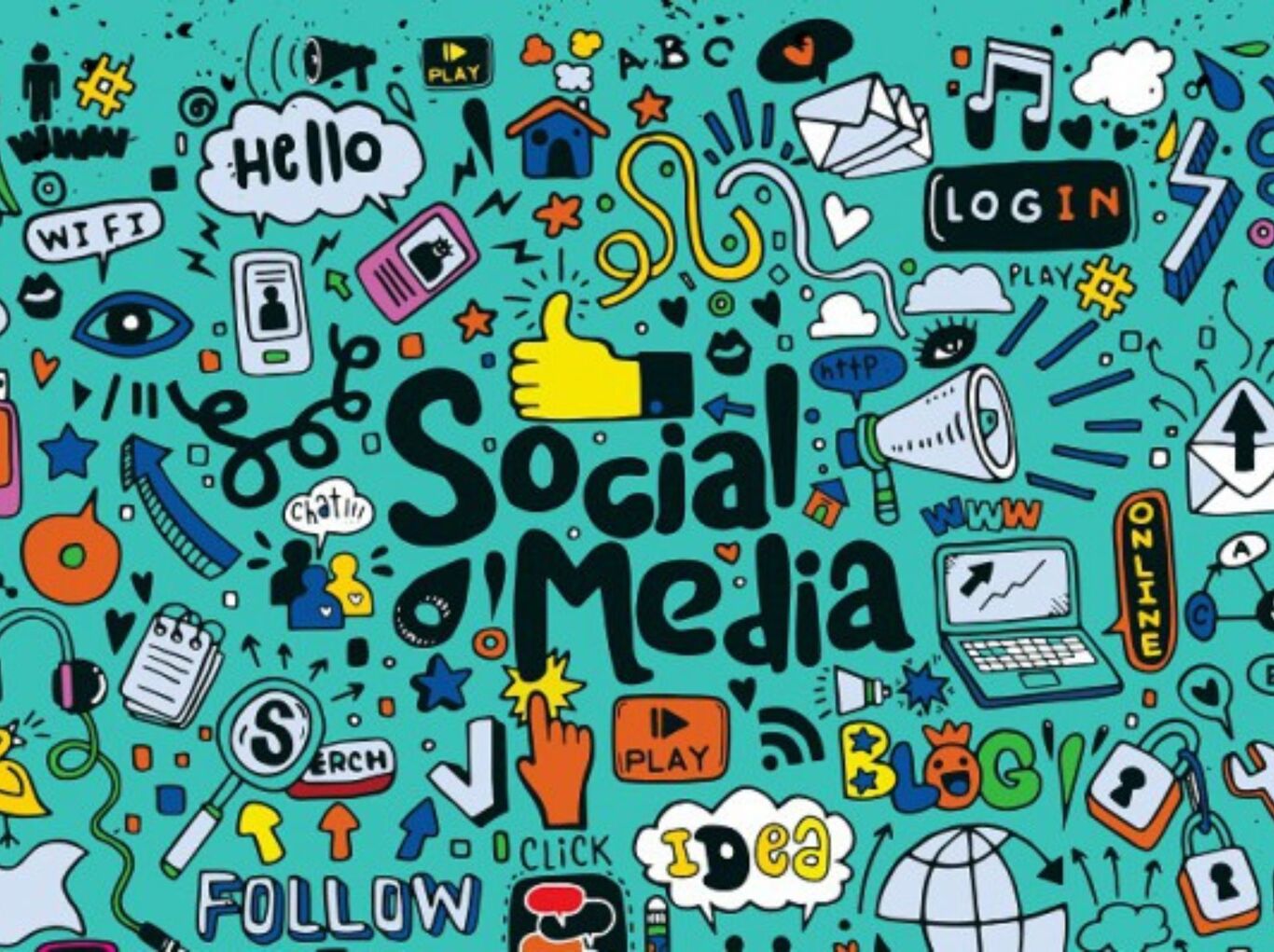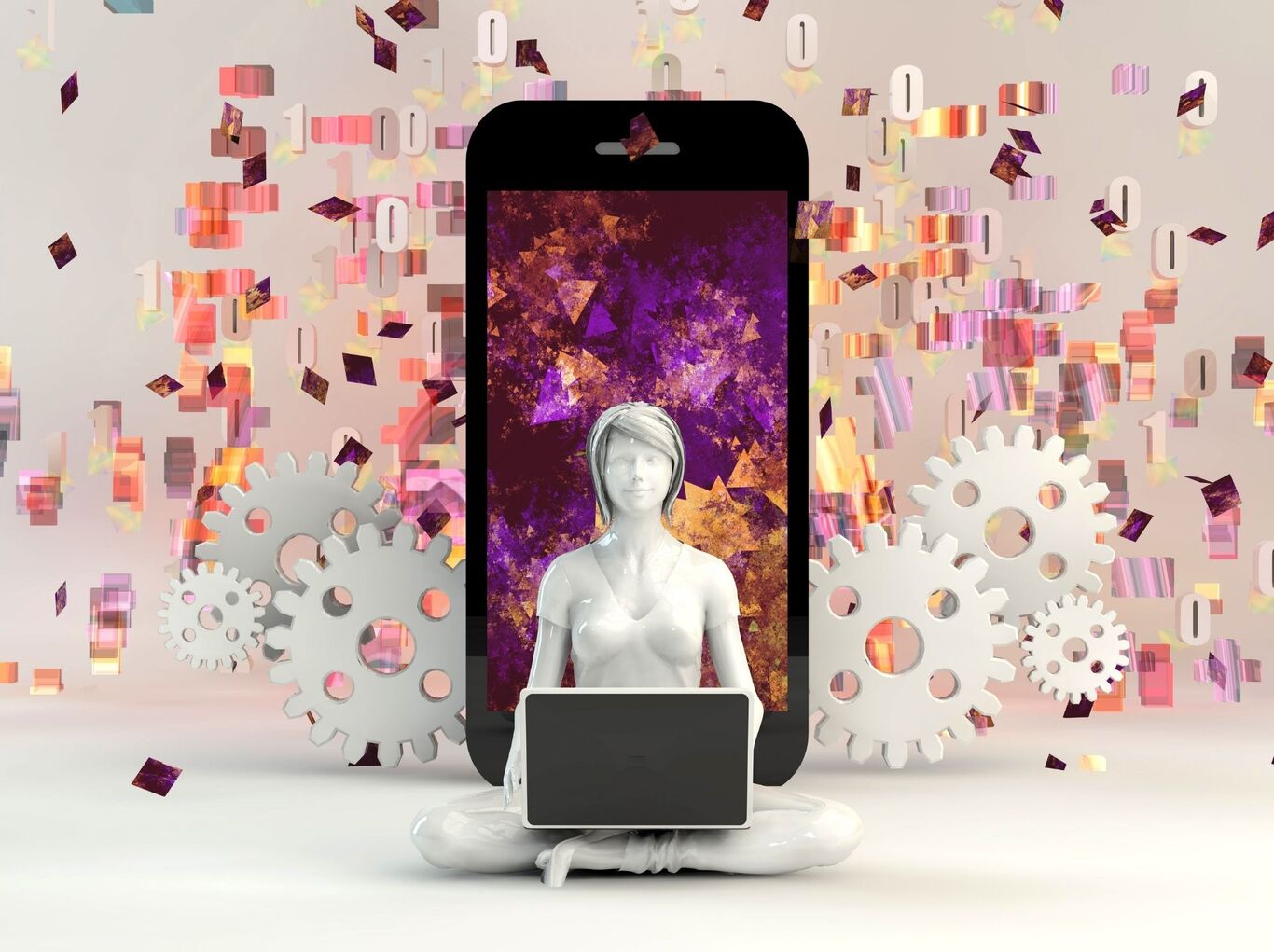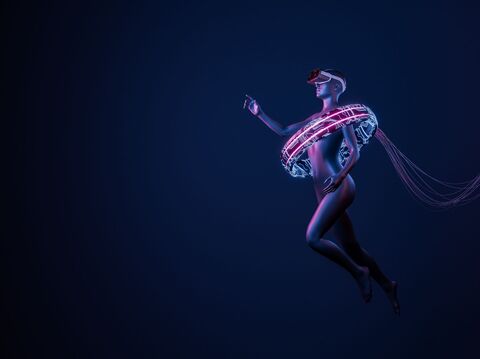Single-Agent vs. Multi-Agent Systems: Differences & How to Choose
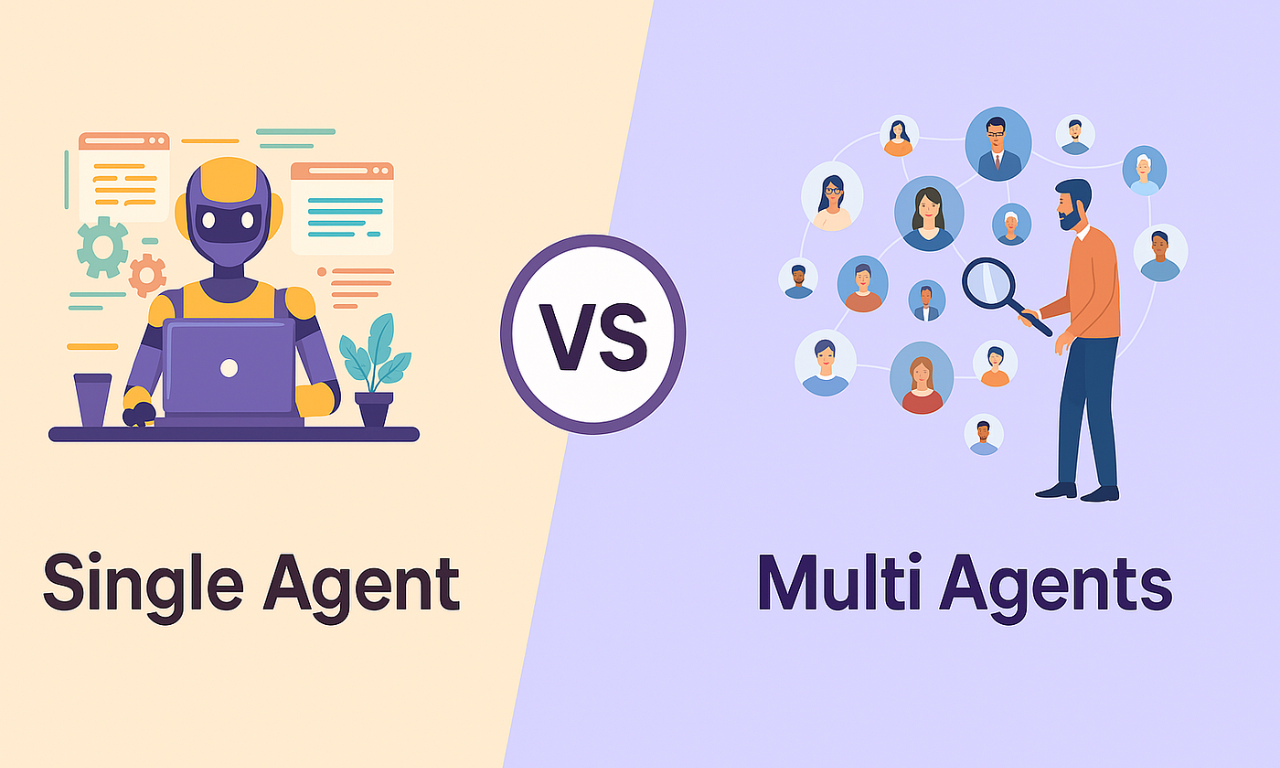
When it comes to AI, the systems you build often come down to one simple question:
Do you want a solo performer or a team of specialists?
In the world of single-agent systems, one agent does it all - deciding, acting, and executing. It's like a high-performing individual who can get the job done, fast and clean, as long as the task is simple.
But what happens when the task becomes too big or too complicated?
That’s where multi-agent systems step in.
Instead of one agent handling everything, multiple agents work together, each tackling a part of the problem. This agentic AI system is more powerful and flexible, but it needs clear communication and coordination to avoid chaos.
In this blog, we’re breaking down how single-agent and multi-agent systems actually work - and more importantly, when to use which.
What Are Single-Agent Systems in AI?
A single-agent system is as straightforward as it sounds - one AI handling everything on its own.
In these systems, single-agent decision-making happens in isolation. AI looks at the options, weighs them, and makes a decision, without needing to check in with other systems or agents.
A great example of a single-agent system is a customer support chatbot.
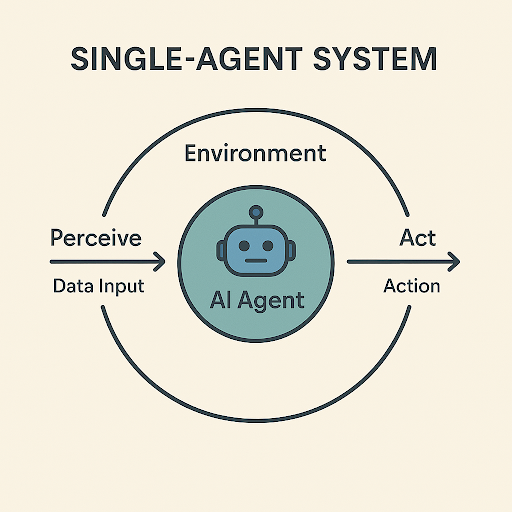
This AI handles inquiries using pre-trained logic. It processes questions, retrieves answers from a database, and provides a response - all on its own. No intelligent agent interaction, no coordination - just one agent doing it all. It’s a one-man show!
Here are quick characteristics of single-agent systems:
-
Centralised: One AI handles all tasks and decisions.
-
Simple processes: The system doesn’t need to collaborate with other agents.
-
Efficient for defined tasks: Works best for straightforward problems.
-
Limited flexibility: Can struggle when tasks become too complex or require multiple inputs.
Did you know?
Around 37% of small businesses now use chatbots, handling routine questions 24/7, saving time and letting human agents focus on more challenging issues. These numbers highlight how a well-tuned agentic AI vs AI agents choice can free human reps for higher-value work.
What Are Multi-Agent Systems in AI?
In multi-agent systems, there’s not just one AI running the show. Instead, you’ve got several autonomous agents in AI that work together, either cooperating or competing, to get the job done.
They stay connected through agent communication protocols, share information, and support each other. This kind of setup forms the backbone of collaborative agent networks, designed for flexibility and resilience.
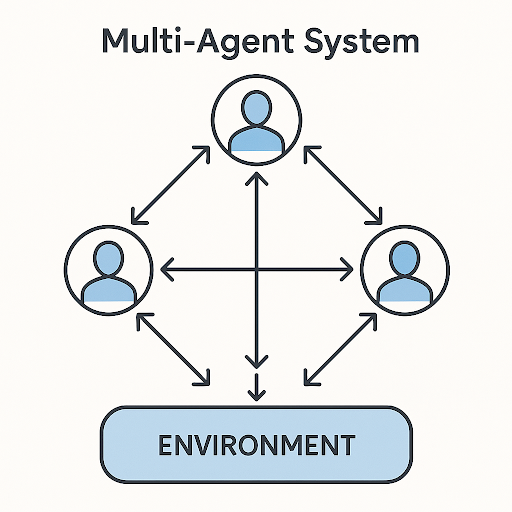
A perfect example is autonomous delivery drones. These drones fly independently, but they’re constantly connected to each other. If one drone needs to adjust its flight path to avoid another, they’ll coordinate in real-time to make sure they don’t bump into each other.
Characteristics of it:
-
Decentralised: Each node follows a decentralised agent architecture that removes single points of failure.
-
Cooperative or competitive: Some agents team up, while others might be working against each other.
-
Adaptable and flexible: These systems can handle big, complex tasks and adapt to changes quickly.
-
Complex to manage: The more agents you have, the harder it can be to keep everything coordinated.
Did you know?
Amazon’s Prime Air just pulled off its first drone delivery in Italy, and its drones also got the green light from the FAA to fly beyond the pilot’s line of sight in the U.S. It’s a milestone for truly distributed AI systems that can scale across borders.
Comparing Single-Agent and Multi-Agent Systems: Key Differences
The best way to see the trade-offs is side by side. The grid below puts single-agent and multi-agent systems against five core factors, so you can judge which setup matches your goals.
| Feature | Single-agent Systems | Multi-agent Systems |
|---|---|---|
| Architecture | A single agent handles everything, keeping things simple and centralized. | Multiple agents work together, each with its own task in a decentralized setup. |
| Decision Making | One agent makes all the decisions without needing to collaborate. | Agents collaborate or negotiate, combining their strengths to solve problems. |
| Scalability | It’s limited by the capabilities of the single agent. | Easily scalable – just add more agents to handle bigger tasks. |
| Fault Tolerance | If the agent fails, the whole system is affected. | If one agent fails, others can take over, keeping the system running smoothly. |
| Implementation Complexity | Simple to implement for smaller tasks with minimal setup. | More complex to design, needing coordination and agent-based system design. |
Read more about how agentic AI is changing businesses in 2025
When Single-Agent Systems are the Better Fit
When you know what single-agent systems are good at, choosing them becomes a no-brainer. Especially when clarity, control, and speed are your top priorities.
1. Simplicity and control
With a single-agent system, everything is in the hands of one agent. No need for constant back-and-forth between multiple systems.
This means no coordination issues or syncing problems, which can be a real headache in multi-agent systems. Plus, it’s easier to keep things under control and fix any issues since you’re only dealing with one agent.
2. Lower computational requirements
When you’re only working with one agent, the system doesn’t need to use up tons of computing power.
This way, there is no need for agents to talk to each other or solve conflicts. It’s more efficient, and it saves on resources.
This is especially useful when you’re working with devices or systems that don’t have a lot of processing power.
3. Easier to design and implement
Building a single-agent system is a breeze compared to one with multiple agents. You don’t need to figure out communication rules or how agents should work together.
It’s a more straightforward design that gets up and running quickly. Whether you're setting up a basic automation or a simple chatbot, you don’t have to worry about complicated coordination.
What Multi-Agent Systems Do Best
Multi-agent setups are your go-to when the task needs shared smarts and real-time teamwork. Yes, they’re complex—but that’s what makes them powerful.
Here’s why the complexity is worth it.
1. Scalability and flexibility
Multi-agent systems grow easily. Instead of upgrading the whole system, you add agents with specific skills as needed.
This allows you to scale step by step, without disrupting what's already working. This flexibility makes distributed AI systems perfect for growing businesses or complex tasks.
2. Robustness through collaboration
Agents in a multi-agent system work together, so if one fails, others step in to keep things running.
This teamwork creates stronger systems than relying on just one agent. Collaboration boosts fault tolerance and keeps the system steady.
3. Complex problem-solving capabilities
When agents with different skills collaborate, they can solve bigger problems faster. They explore multiple solutions at once, making them way more efficient than a single agent.
In competitive multi-agent environments, this multi-agent approach speeds up problem-solving by testing various paths simultaneously. Before launch, smart teams sandbox those paths inside competitive multi-agent environments to surface edge-case risks early.
Limitations of Single-Agent Systems
One brain can only do so much, especially when the problem needs real-time reactions or teamwork. That’s where single-agent systems often stumble.
Here are the main limitations to watch out for.
1. Limited adaptability
A single-agent system can struggle in complex environments.
When too many tasks or issues need attention, the agent doesn’t have the flexibility of multiple agents with different skills. It’s like relying on one person to handle a whole project when a team would get the job done faster.
2. Single point of failure
The biggest risk with single-agent systems?
One failure can take down the whole system. If the agent runs into an issue, everything stops. There’s no backup to take over. In systems that need to be running 24/7, this is a major concern.
3. Difficulty in handling dynamic environments
Single-agent systems are often overwhelmed in fast-paced or complex environments.
When tasks change quickly or new challenges arise, one agent can’t keep up. It's like trying to juggle too many things at once - eventually, something falls through the cracks.
What Makes Multi-Agent Systems Complex to Manage
Multi-agent systems sound smart – and they are – but they’re not plug-and-play. There’s a lot to coordinate behind the scenes.
Let’s look at the challenges they bring.
1. Coordination and communication issues
When multiple agents work together, communication can become a bottleneck. Sharing information, resolving conflicts, and reaching agreements between agents takes time. The more agents you add, the harder coordination becomes.
2. Complexity in design and management
Designing a multi-agent system isn’t a walk in the park. You need to plan everything carefully: who does what, how agents talk to each other, and how they work together. It’s a bit like building a big, complex team, and managing that team can get tricky.
3. Resource contention among agents
In collaborative agent networks, agents often need the same resources, like processing power, data, or memory. This can lead to competition, where agents are fighting for the same limited resources. If not properly managed, this can cause delays or slow down the system.
Single-Agent vs. Multi-Agent Systems: A Use Case Comparison
AI isn't one-size-fits-all. Some tasks are best handled by a single, focused agent, while others need a bit more teamwork to really shine.
So, how do these systems stack up in the real world?
Let’s break down some examples and see how both single-agent and multi-agent systems are used to solve problems and make things run smoothly.
1. Personal assistants
When it comes to personal assistants, think about chatbots or virtual assistants that help you manage your day. They can schedule your appointments, answer questions, and make recommendations. For simple tasks, a single agent can handle it all on its own.
-
Single-agent: A virtual assistant or chatbot runs solo, using pre-set data to handle things like answering customer queries or setting reminders.
-
Multi-agent: When things get a bit more complex, like handling a team-based customer service scenario, multiple agents work together, each doing their part to provide a smooth, personalised experience.
2. Manufacturing
In manufacturing, machines are key, and automation plays a big role. Single-agent systems are perfect for controlling one machine, but when you need things to run smoothly across the whole production line, you need multi-agent systems to work together.
-
Single-agent: One agent is in charge of a specific task, like quality control or running an individual machine.
-
Multi-agent: Multiple agents coordinate across production lines, making sure everything flows, from raw materials to finished products, while also handling logistics and supply chain management.
See how agentic AI is already transforming retail and production in our blog on agentic AI in manufacturing.
3. Finance
In finance, single-agent systems handle individual tasks, such as executing trades or detecting fraud. However, when it comes to managing a more complex task, such as an entire portfolio, multi-agent systems are employed.
-
Single-agent: A trading algorithm might run on its own, analysing market trends and making decisions in real-time.
-
Multi-agent: Collaborative agent networks come into play when managing portfolios or simulating market conditions, with multiple agents working together to make smarter decisions.
4. Healthcare
Healthcare benefits from both types of systems. Diagnostic tools work well on their own, but treatment planning often needs more minds working together.
-
Single-agent: Medical tools and patient monitoring systems handle the basic data collection and diagnosis on their own, giving you the results instantly.
-
Multi-agent: For more complicated treatment plans, intelligent agents representing different specialities (like doctors or AI systems) work together to come up with the best course of action for the patient.
Making the Right Choice for Your AI System Design
Choosing between single-agent and multi-agent systems isn’t about “better or worse.” It’s about fit.
Solo agents shine when the brief is tight and you need quick wins without heavy compute. Multi-agent networks pay off when the workload shifts, inputs stream in real time, or reliability must survive a node-outage.
The smartest teams map the problem first, then match the architecture, saving months of re-engineering later. GrowthJockey helps clients run that mapping exercise up front, weigh trade-offs, and prototype fast, so the chosen design scales rather than stalls. Implement top AI strategies in your business with our expert team.
In a market where tool stacks evolve weekly, architecting for flexibility is the safest hedge. Pick the structure that meets today’s KPI, but leaves doors open for tomorrow’s pivot.
FAQs on Single-Agent vs. Multi-Agent Systems
1. What is the main difference between single-agent and multi-agent systems in AI?
A single-agent system has one autonomous entity that senses, plans, and acts alone. A multi-agent system spreads the work across many agents that cooperate or compete to solve larger, more dynamic problems.
2. When should a business choose a single-agent system?
Pick a single agent when the task is well-defined, response time must be tight, and hardware or budget limits rule out extra coordination layers—think kiosk chatbots or device-level control.
3. Why are multi-agent systems considered more scalable?
You add capacity by adding agents, not by rewriting the whole model. Each new agent brings fresh compute or a specialised skill, so the system grows horizontally without throttling performance.
4. What are the biggest challenges with multi-agent coordination?
The gains come at the cost of harder design: agents must share data, resolve conflicts, and avoid resource bottlenecks. Poorly defined protocols can create delays or even deadlocks.



